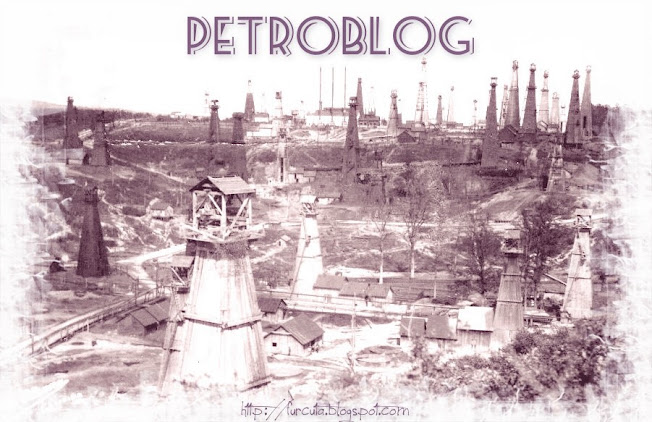''Baia Solonţ este cea mai considerabila exploataţie de titeiu din judeţul Bacău, prin urmare din Moldova.
Puţurile de păcură din
acest judeţ sunt numeroase si respândite in toată partea muntoasă. Mai toate sunt
caracterisate printr'uă calitate excelentă de păcură, dar printr'uă producţiune
destul de slabă, care a devenit şi mai mica de când crisa industriei petrolurilor
domnesce în România.
Solonţul este singura localitate
care 'şi păstrează însemnătatea, prin urmare devine îndoit de interesant.
Facerea conductului
pentru transportul ţiţeiului de la bae la fabrica din Moineşti şi construirea
calei ferate Moineşti-Târgul Ocnei, ii vor îmbunătăţi mult condiţiunile actuale
de transport şi îi vor da un nou avent în viitor.
Istoricul băei este
acela al mai tutulor exploataţiilor de păcură. Locuitorii vedend infiltraţiuni
de teteiu pe marginea păraelor, au strâns mai întâi această substanţă de pe
suprafaţa apei, au făcut apoi uă mică groapă în locul de unde o vedeau eşind,
pe urmă puţuri pe cari le-au adâncit încetul cu încetul, cu cât 'şi
perfecţionau mijloacele lor de lucru. Ei constatau uă crescere a producţiunei
cu adâncimea.
Petrolul şi destilaţia
ţiţeiului erau pe atunci necunoscute, nu numai în localităţile perdute din Munţii
Moldovei, dar mai in toata lumea. Păcura extrasă servea la unsul cărutelor si ca
combustibil. De multe ori ţeranii o străngeau într'uă groapă şi îi dedeau foc,
ca părţile volatile să se ducă şi să le rămăe numai residiurile cari serveau
pentru uns.
Fie-care băias se tinea
de lucrările făcute deja de altul si
puţurile, de multe ori prea apropriate se ( jenau ) stinghineau între ele. Cu
încetul s'au făcut reguli în această privinţă, s'a reglementat distanţa între
gropi.
Intr'uă zi, un om sau uă associaţie de oameni mai luminati au asezat sondage, cari încetul cu încetul au acoperit zona petroliferă.
Iacă mersul firesc al
unei băi de ţiţei. Acesta este şi cel urmat în Solonţ. Locuitorul Iordache
Spănache pe Ia 1855 strângea ca şi cei-I-alţi ţerani păcură groasă pe albia
Solonţului, servindu-se de un pămătuf de făn pe care'l storcea apoi şi vindea
păcura. pentru uns căruţa cu 6 lei vechi vadra. Lui Spanache, celui d'întei, îi
a venit în gand să facă un puţ pe malul părăului Clopotului care
aducea prin apa sa ţiţeiul în părăul Solonţului. Acestui puţ îi s'a dat numele
de Spănăchioaia după numele celui ce'l făcuse.
Groapa, de vr'o căţi-va
stănjeni numai, dedea păcură dar puţină, ast-fel că stăpânului ei îi a dat în
gând se meargă mai jos, să vază dacă nu va găsi mai multă. A dat însă de uă
dificultate inherentă puţurilor de păcură: gazele ce se degajau din primul
strat petrolifer pe care 'I strebătuse. Aceste gaze constitue ceea ce se
numesce pe franţuzesce: grisou.
Afară de primejdia de
explozie dacă se apropie vr'uă flacăre, ele îmbată, pe lucrător, adică îl
ameţesc şi pe urma'l asfixiadă. Spanache care avea spiritul inventiv, a
născocit un. sistem de ventilaţie, primitiv ce este drept, dar cu care'şi a
făcut treaba.
Acest sistem consta
dintr'un pat de cetină de brad numit jup pe care'l suia şi'l cobora în puţ
printr'uă frănghie şi cu care făcea ast-fel uă măturare a groapei de gaze. La
20 de stănjeni* ( 45m ) a găsit un nou
strat petrolifer, producend 20 la 30 vedre pe septămână**.




,%20colec%C8%9Bia%20Renasce.jpg)





